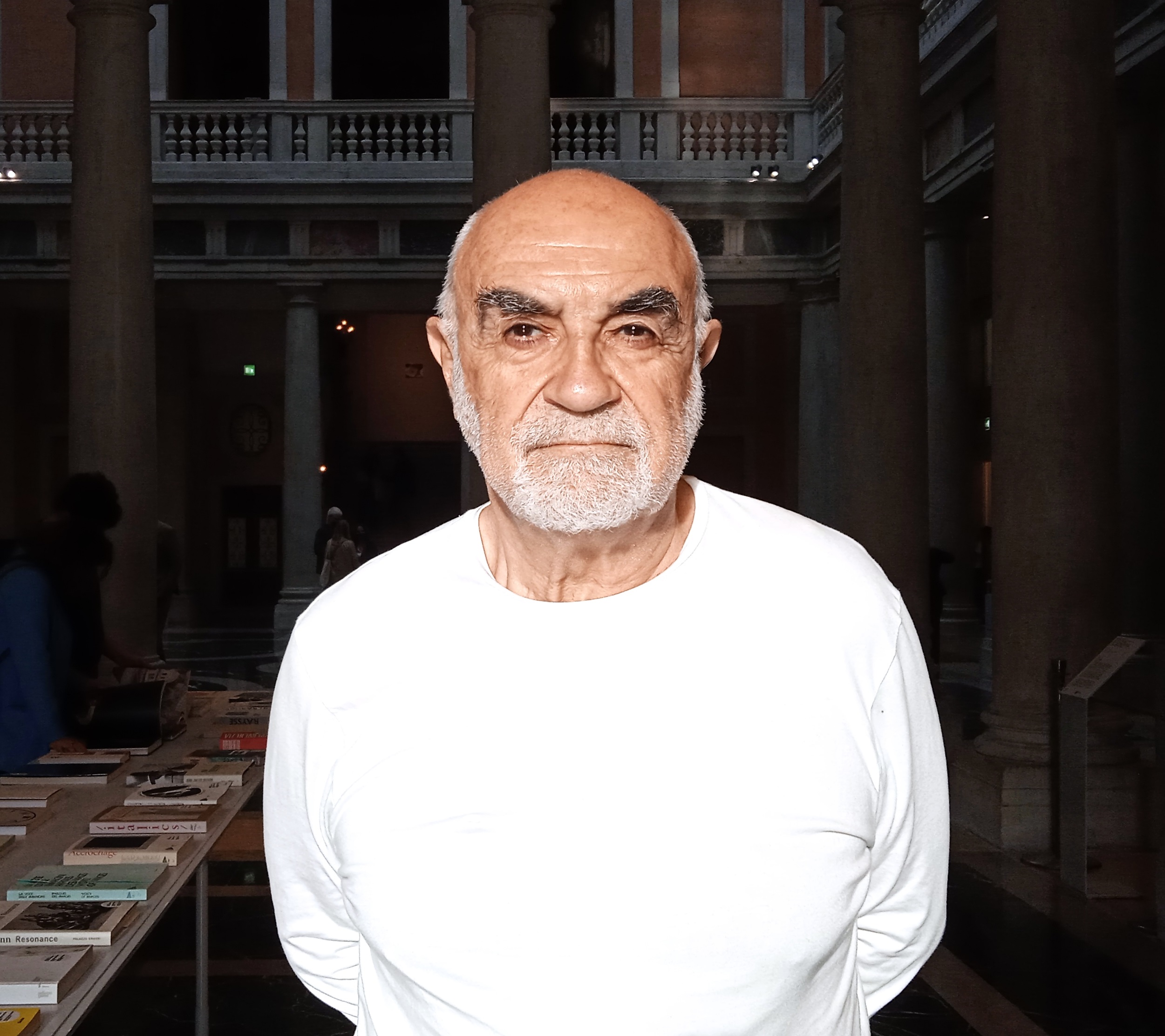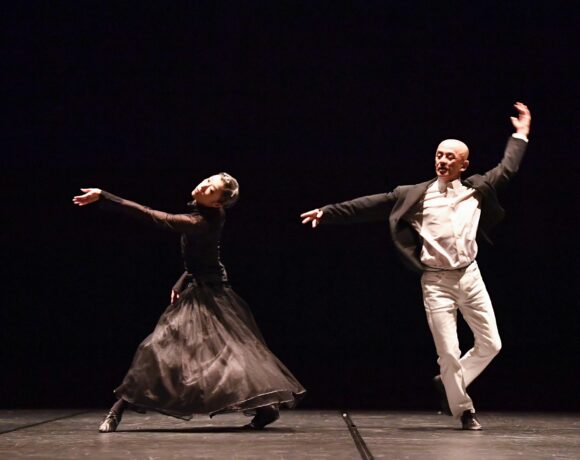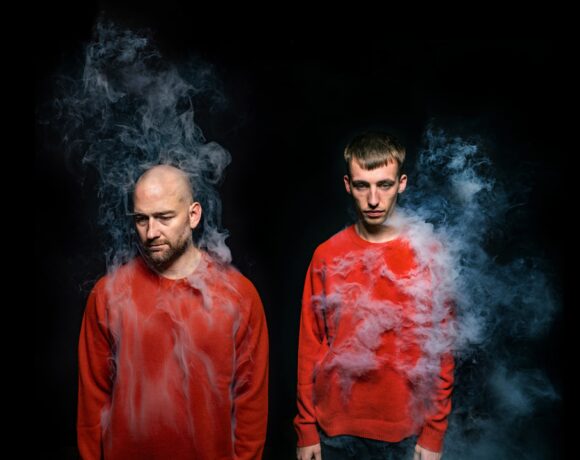Museo del Novecento presents “Anna Valeria Borsari. From some uncertain point” curated by Giorgio Zanchetti and Iolanda Ratti with Giulia Kimberly Colombo, a solo exhibition dedicated to the work of the artist from the late sixties to nowadays: a path of continuous exploration of the themes of identity and the relationship between reality and representation, through sculpture, photography, installation and intervention in space.
Valerio Romitelli: Your career as an artist began when your main activity was very different: university teaching, which you then abandoned without ever interrupting your activity as an essayist, which is very prolific. Do you therefore consider that you have made a “leap of species” or rather that you have always continued the same original inspiration?
Anna Valeria Borsari: My parents directed me to humanities, while I, as a child, wanted to be a painter. Attending the Faculty of Letters and Philosophy, however, I found various disciplines that interested me: philosophy of language, linguistics, aesthetics. So I started a personal research on several fronts: I experimented in the visual and linguistic fields together. Over the years working in different sectors has become very burdensome, I had to make a choice and I resigned from my role as a teacher of Romance philology. However, those interdisciplinary studies were fundamental for the development of my artistic activity.
Your art is always and evidently nourished by particularly intense references and intellectual elaborations, which also include themes of relativistic and quantum physics: can you specify how your inspiration comes from this? And what evolutions have taken place over the course of your career?
Among my initial motivations was the need to question the dogmatic certainties of authoritarian thinking; at the same time, at a deeper and more personal level, I felt the need to overcome the distance that normally stands between oneself and what is other than oneself: a fact that also implies a different way of conceiving the individual, the subject, respect to the tradition of our old West. After a path of self-analysis that lasted about ten years, I think I have been quite successful, and since ’77 even in my work as an artist we can perceive an evolution. The undermining of individual identity, our perceptions, has implied the need to resort not only to logical-linguistic tools and psychoanalysis, but also to scientific research and quantum physics. In my book Il punto nullo, alcune istruzioni per costruire castelli di sabbia (The null point, some instructions for building sand castles) (1979-2001), I start examining the sand, whose name – “matter” – does not allow identification, then I come to a grain of sand, which in itself would be something easily identifiable, but delving into its composition we are faced with minimal particles, such as neutrinos, which are in constant mutation. In constant mutation, albeit very slow, are also castles, monuments, all that should instead guarantee us to last over time. Leonardo already noticed this; with the Tao of physics (1975) Fritjof Capra also highlighted other aspects of the question. The desire to “become something else”, of the dissolution of the subject, starts from here to then express themselves in different ways.
The word “points” appears in the title of your exhibition, and we know that a key word of your artistic experimentation is that of “places”. Can you better explain the relationship that exists between your “points” and your “places”?
The title of the exhibition is taken from the text of one of my works: Paesaggio, da una serie di dipinti perduti (Landscape, from a series of lost paintings) (1988), where I describe one of these hypothetical paintings that no longer exist. Places are actually a fundamental element in my work, because it is in places that the subject, the individual, ends up entering and dissolving; this happens in my site specifics, but this meaning of place can be extended to matter, to other individuals, to memory. The point is an abstraction, perhaps it can refer to our relative, changing point of view; but it is also at the origin of surfaces and spaces. I hadn’t thought about it, thanks for the question.
It seems to me that your exhibition also proposes a sort of balance sheet of your long and rich work. Can you specify how much you re-elaborate what has already been done and what do you introduce unpublished?
The choice of the works to be exhibited was made by the curators, as it usually happens in institutional spaces, I only intervened on some details of the set-up. In the end it seems to me that my work is more relevant than I thought, even if I have always believed in it. On display there is my reinterpretation of the Lottery set up in 2000 at the Neon gallery: then by buying a ticket you won one of the “prizes” (which together constituted a sort of autobiography); today drawing is no longer possible, and on a structure covered by a fabric similar to those in which the archaeological finds are exhibited, I have relocated what remains of that installation. I also presented a very recent work: Da remoto, la posizione dell’artista (Remotely, the artist’s position), where, on a computer screen placed on a desk, as if someone were accessing it from a distance, letter after letter a writing is composed on the changing over time of position of the artist, of his/her relationship with the world: a topic that I have been dealing with for years now.
Your artistic path is characterized by an extraordinary multiplicity of fields and expressive registers, also punctuated by performances, assemblages of materials, photos, videos, installations and so on, can you tell us about the subjective plot that holds this multiplicity together?
I try to do it starting from an example. In 1977 I performed in anonymity, like a street artist, a Madonna made up of coins and cereals of various colors in Piazza Maggiore, in Bologna, and then walked away without giving explanations; the passers-by who had gathered and the pigeons in the square quickly wiped it out, collecting coins and swallowing cereals. The work, entitled Rappresentazione, presentazione, azione (Representation, presentation, action), was repeated by me, as in a ritual, in Piazza della Signoria in Florence and in Piazza Duomo in Milan. Then in 1980 I instead represented a Quarta madonna (Fourth Madonna) by gluing coins and cereals on a wooden table, and I specified in a booklet that Quarta madonna could be exhibited in a church or museum, and that offerings could be brought to her: reversing the whole operation. I have no longer made either madonnas or mosaics of various materials, nor have I continued to do actions or performances in the squares; while the elements that can be found in my later works are rather: anonymity – when it was possible – which allows the viewer not to be conditioned by an artistic context; the opening of a work to the action of other individuals or external agents capable of modifying and deleting it; the repetition of images and also the creation of images that lead back to something that no longer exists or to a distant archetype; a game of references between objects, “things” that are in themselves and things that represent other things. All declined in very different ways over time, because what interests me most is always research. With feeling.
Valerio Romitelli
Info:
Anna Valeria Borsari. Da qualche punto incerto
10/09/2021 – 13/02/2022
Museo del Novecento
Piazza Duomo, 8 Milano
 Anna Valeria Borsari, Rappresentazione, presentazione, azione, 1979, photographic prints. Documentation of the action carried out in Milano, piazza del Duomo. Ph. Courtesy dell’artista
Anna Valeria Borsari, Rappresentazione, presentazione, azione, 1979, photographic prints. Documentation of the action carried out in Milano, piazza del Duomo. Ph. Courtesy dell’artista
 Anna Valeria Borsari, Altrove, 1979-1980, photographic prints. Documentation of the site-specific artwork carried out in Bologna. Ph. Courtesy dell’artista
Anna Valeria Borsari, Altrove, 1979-1980, photographic prints. Documentation of the site-specific artwork carried out in Bologna. Ph. Courtesy dell’artista
 Anna Valeria Borsari. Da qualche punto incerto. Installation view at Museo del Novecento, Milano. Ph. courtesy Museo del Novecento
Anna Valeria Borsari. Da qualche punto incerto. Installation view at Museo del Novecento, Milano. Ph. courtesy Museo del Novecento
 Anna Valeria Borsari. Da qualche punto incerto. Installation view at Museo del Novecento, Milano. Ph. courtesy Museo del Novecento
Anna Valeria Borsari. Da qualche punto incerto. Installation view at Museo del Novecento, Milano. Ph. courtesy Museo del Novecento
 Anna Valeria Borsari. Da qualche punto incerto. Installation view at Museo del Novecento, Milano. Ph. courtesy Museo del Novecento
Anna Valeria Borsari. Da qualche punto incerto. Installation view at Museo del Novecento, Milano. Ph. courtesy Museo del Novecento

Valerio Romitelli (born in Bologna in 1948) taught, researched and lectured in Italy and abroad. His disciplines: History of political doctrines, History of political movements and parties, Methodology of the social sciences. Among his latest publications: L’amore della politica (2014), La felicità dei partigiani e la nostra (2017), L’enigma dell’Ottobre ‘17 (2017), L’emancipazione a venire. Dopo la fine della storia (2022).






NO COMMENT